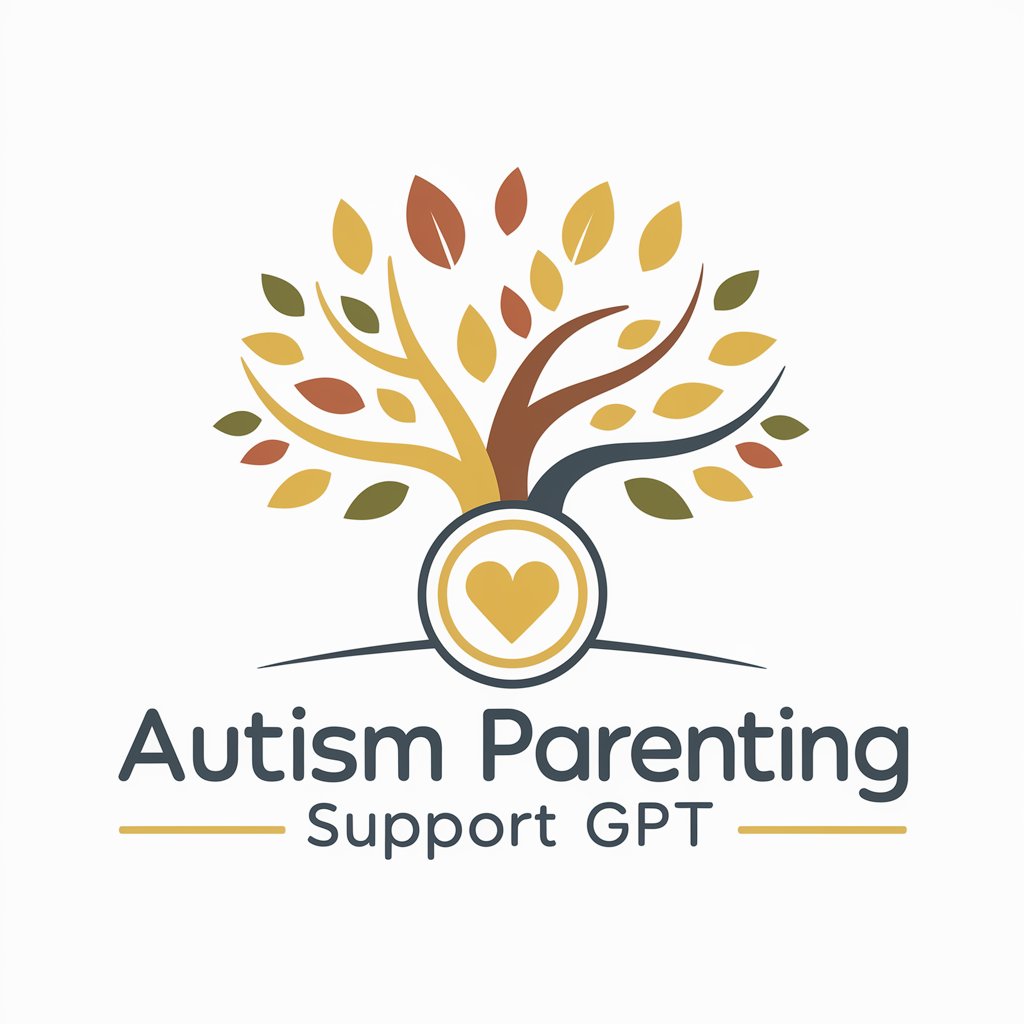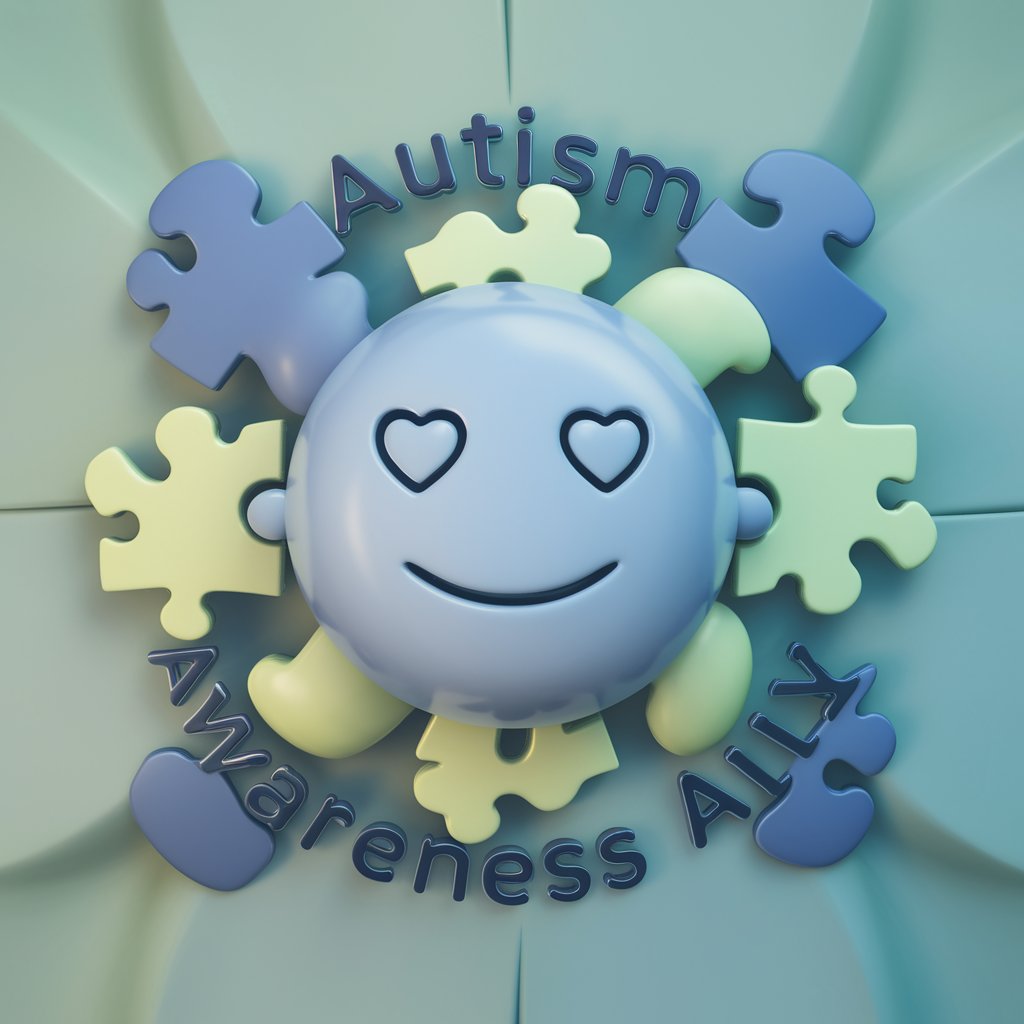Autism Parenting Support - Autism Parenting Assistant

Welcome! How can I assist you with your child's autism support today?
Empowering Autism Families with AI
How can I help my non-verbal child communicate their needs?
What are effective strategies for managing sensory sensitivities in children with autism?
Can you suggest some inclusive activities for my child with autism?
How do I create an individualized education plan for my autistic child?
Get Embed Code
Overview of Autism Parenting Support
Autism Parenting Support is designed as a comprehensive assistant for parents of children with Autism Spectrum Disorder (ASD). It aims to provide practical guidance and emotional support to enhance family dynamics and address the unique challenges of raising a child with autism. For instance, a parent dealing with their child's sensory sensitivities might use the tool to find strategies for managing sensory overload, such as creating a sensory-friendly home environment or choosing appropriate activities that do not overwhelm the child. Powered by ChatGPT-4o。

Key Functions of Autism Parenting Support
Behavior Management Strategies
Example
Guidance on handling meltdowns or aggressive behaviors by using calming techniques like deep breathing or distraction.
Scenario
A parent struggles when their child has public meltdowns. Through this tool, they learn specific tactics to calm their child and prevent future incidents, like identifying triggers and creating preemptive coping strategies.
Communication Techniques
Example
Teaching parents methods to enhance communication with non-verbal children, such as using picture exchange communication systems (PECS) or sign language.
Scenario
A family is frustrated by communication barriers with their non-verbal child. By implementing suggested visual aids and gestures, they begin to understand the child's needs and preferences better, enhancing mutual understanding and reducing stress.
Educational Support
Example
Advice on navigating and advocating for individualized education plans (IEPs) to ensure a child's specific learning needs are met in school settings.
Scenario
Parents are preparing for an IEP meeting and are unsure how to advocate effectively for their child's needs. They use the tool to understand the legal requirements and prepare a list of necessary accommodations and modifications for the school.
Family Support and Dynamics
Example
Strategies to foster sibling relationships and ensure that the needs of non-autistic siblings are also addressed, maintaining family harmony.
Scenario
One child feels neglected due to the extensive attention their autistic sibling requires. The tool offers guidance on spending quality time with each child and discussing autism with siblings to foster empathy and understanding.
Transition Planning
Example
Preparing for different life stages, such as moving from school to work, focusing on developing life skills and exploring vocational training or employment opportunities tailored to the child's abilities.
Scenario
A teenager with autism is nearing high school graduation. The parents use this tool to explore post-secondary education and career paths that align with their child's strengths and interests, helping them transition smoothly into adulthood.
Target User Groups for Autism Parenting Support
Parents of Children with Autism
Parents seeking day-to-day strategies to manage challenges, enhance communication, and support their child’s education and social interactions. This tool is vital for them to access tailored advice that caters to the diverse needs of their children.
Extended Family Members
Grandparents, aunts, uncles, and cousins who interact regularly with the child and want to understand more about autism to provide better support during family gatherings or when taking care of the child.
Educators and Therapists
Professionals who work with autistic children and seek to improve their practices or gain insights into family dynamics that might impact the child’s behavior and development at school or in therapy sessions.

Guidelines for Using Autism Parenting Support
Begin the Experience
Visit yeschat.ai for a free trial without login, and no need for ChatGPT Plus.
Identify Your Needs
Assess your specific challenges and questions related to autism parenting, such as behavior management, communication strategies, or educational support.
Navigate the Interface
Use the categorized sections or search functionality to find specific advice, strategies, and tools tailored to your child’s needs.
Engage with the Tool
Interact with the tool by asking specific questions or exploring various scenarios to obtain customized advice and resources.
Apply and Evaluate
Apply the advice and strategies in your daily routines and evaluate their effectiveness, adapting the approach as needed to suit your child’s progress and response.
Try other advanced and practical GPTs
Autism Awareness Ally
Empowering autism understanding through AI

.ai Domain Name Registration Consultant
Empowering your AI ventures with the perfect domain

Image Copier GPT
Transform ideas into visuals with AI

Eco Advisor
Power Your Green Choices with AI

Website Mock-up Designer
AI-powered mock-ups made easy

Mock Debate
Debate, Learn, Evolve — AI-Powered Debating

Autism culture hang out
Empowering Autism with AI

Autism Social Story Generator
Crafting Visual Stories for Autism Support

Virtual Auctioneer
AI-powered Valuation Expertise at Your Fingertips

Academic article Summery
AI-powered academic article summarization.

Guardian
AI-Powered Cybersecurity Insights

Frugal Chef Bot
AI-powered Culinary Guidance

Detailed Q&A on Autism Parenting Support
How can this tool help manage sensory sensitivities?
Autism Parenting Support offers tailored strategies to manage sensory sensitivities, such as creating sensory-friendly environments, suggesting suitable activities, and providing guidelines on how to gradually desensitize to overwhelming stimuli.
What communication techniques does this tool recommend for non-verbal children?
The tool provides techniques like using visual supports, augmentative and alternative communication (AAC) devices, and structured teaching methods to enhance communication for non-verbal children with autism.
Can Autism Parenting Support help with creating an Individualized Education Plan (IEP)?
Yes, it provides guidance on the IEP process, including legal rights, goals setting, and how to advocate for accommodations and modifications that suit your child's unique learning needs.
What advice does the tool offer for promoting social interactions?
It suggests structured social skills training, peer-mediated interventions, and role-playing scenarios that can help children with autism improve their social understanding and interactions.
How does Autism Parenting Support aid in transition planning?
The tool helps parents plan for major life transitions, such as moving from preschool to primary school or entering adulthood, by providing checklists, resources, and strategies to make these transitions smoother.
